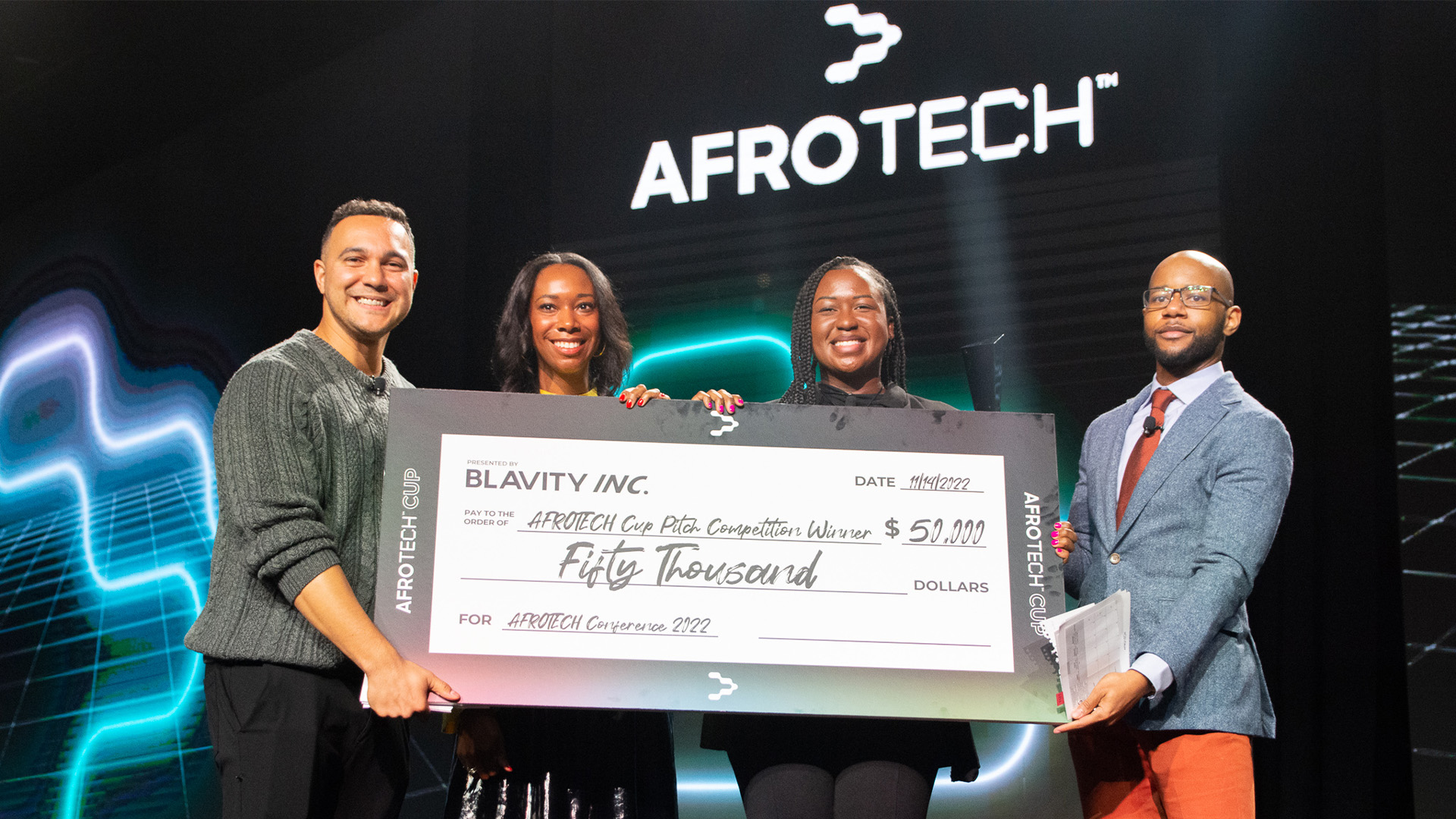We’re still coming down from cloud nine after the experience we had at AfroTech Conference 2022.
As we previously shared, around 25,000 attendees convened for sessions, panels, social link-ups, and more, from Nov. 13-17, after two years of meeting virtually in AfroTech World.
While there was so much in store, we would be remiss to not talk about one of the conference’s most exciting moments — the pitch competitions.
The Competitions
For the AfroTech Cup Pitch Competition and AlphaNoire Web3 Pitch Competition, three top finalists for each respective competition had the opportunity to be awarded a $50,000 check for their company.
The AfroTech Cup Pitch competition finalists were able to pitch their Consumer Packaged Goods (CPG) companies and startups to Collide Capital’s Aaron Samuels, Blavity Inc.’s Jeff Nelson, and HBCUvc’s Chelsea Roberts.
The Finalists
- Swella – Zanbria Asante & Brooke Hill
- Spoonful – Bradley Gifford
- Mathematician, Jr. – Ameerah Anakaona Bello
The AfroTech Cup Pitch Competition Winner
Once the fierce deliberation among the judges came to a close, Swella, an Atlanta-based company standardizing and automating the hair braiding experience, was selected as the winner.
View this post on Instagram
After experiencing firsthand how time-consuming it was to take out their braids, Zanbria Asante and Brooke Hill took action to help fellow Black women facing the same predicament.
On average, Black women in America spend three hours manually taking out their braids.
View this post on Instagram
With conducted research of over 200 Black women and an advisory team with long-term tech experience, the co-founders created Swella’s Unravl device, which aims to safely take down braids for maintaining healthy hair.
How Unravl Works
“The Unravl device unravels three interlaced strands of hair,” Swella explained. “It is made up of mixed eco-friendly bristles that [are able to] break through multiple braids (width size: .275 inches – 1-inch braid, <12 inches in length). Currently, the bristles use the force of five newtons (~one pound) to unravel a 12-inch braid.”
They continued: “This device unravels medium-sized shoulder-length braids because our findings from customer discovery showed that medium-sized braids are the most popular size among women.”
According to Asante and Hill, the first product was designed for synthetic hair, and the steps are simple:
- The Unravl starts from the bottom of the individual braid.
- Then, a buffer between the scalp and the device goes on to take the braiding hair completely down.
There's Always More In Store
In addition to Swella winning the AfroTech Cup Pitch Competition grand prize at AfroTech Conference 2022, the community was able to watch Web3 companies and startups as they pitch their businesses and product(s).
The judges for the AlphaNoire Web3 Pitch Competition included Brandon Bryant of Harlem Capital, Florcy Morisset of Accenture, and Will Campbell of Quantasy.
The Finalists
- PalmPlug – Olaoluwa Adesanya & Justin Mogannam
- The CryptoMom App – Kendra & Lord Cole
- Black Terminus AR – Damien McDuffie & Britt Bass
AlphaNoire Web3 Pitch Competition Winner

Olaoluwa Adesanya and Justin Mogannam’s PalmPlug, wearable technologies for spatial computing, came in as the winner.
Combining Adesanya’s hardware design experience at Microsoft with Mogannam’s experience of previously working as a senior firmware engineer for Qualcomm, plus the rest of the team’s industry experience, a dynamic force was built to help solve issues of human-computer interaction.
PalmPlug works to address the challenge that augmented reality and virtual reality device users have of not being able to easily control, touch, feel or grasp virtual objects while seeing them.
How PalmPlug's Gloves Work
“We provide upper body tracking using a combination of IMU sensors and depth cameras carefully positioned on our gloves to track the arm and fingers,” PalmPlug’s founders explained. “For interactive feedback, we tap into the sense of touch using an array of vibrational actuators in combination with speakers to provide high-definition haptic feedback and spatial audio feedback.”
“We also enrich the user experience using multicolor led lights to provide visual cues for users,” they added. “For example, our gloves can change color to communicate temperature as opposed to using thermal actuators, so when a user touches a cold object in AR our gloves turn blue, and when they interact with a hot virtual object our gloves turn red. Finally, we have spatial cameras embedded in the front of our gloves, which enable a lot of industrial applications such as object recognition, 3D scanning, QR code scanning, and more.”


